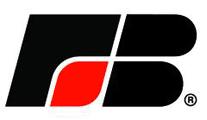 American Farm Bureau Chief Economist Bob Young covers the basics in this report from AFBF’s Johnna Miller, Director of Media Development, American Farm Bureau talk about how the debt downgrade impacts Agriculture
American Farm Bureau Chief Economist Bob Young covers the basics in this report from AFBF’s Johnna Miller, Director of Media Development, American Farm Bureau talk about how the debt downgrade impacts Agriculture
By American Farm Bureau Federation
Miller: So Standard & Poor’s downgraded the United States credit rating from a risk-free AAA to AA+. But what does that mean?
Young: The first, best answer is that nobody really knows. We have never been here before. You will see dominoes shift all over the country however over the next few days. The federal government credit rating goes down, state credit ratings are going to go down, county credit ratings are going to go down, city credit ratings are going to go down, yada yada yada on and on and on down the pike.
Miller: American Farm Bureau’s Chief Economist Bob Young says in the short-run this may not have a big interest rate effect, but in the long run, the uncertainty just got bumped up a notch.
Young: Basic finance would say that a lower rated bond would face a higher interest rate than a higher rated note and so from that standpoint one would sure think we’re going to have to expect that farmers and ranchers are going to pay higher rates than they would otherwise pay. But again, this is totally new territory. Everything associated with governments are going to face this downgrade, so will rates associated with Farm Credit be affected? Again, fundamentals would say yes, but the market may well just slough this off. The underlying condition of agriculture and the state of farmers’ balance sheets are pretty much the same today as they were last Thursday. We’re going to have to wait and see.
Miller: Many people don’t realize the important role credit plays in growing the nation’s food and fiber.
Young: It’s not just credit associated with buying land at or credit associated with buying equipment. It’s credit associated with the operating costs associated with putting that crop in the ground. It’s buying the seed, it’s buying the fuel, buying the fertilizer. It’s buying the chemicals it takes to produce that crop and protect that crop. It’s all those things that farmers are going to have to pay more for as we move forward.
Miller: And consumers will end up feeling that squeeze, too. But Young says the downgrade will hopefully serve as a reality check, particularly for the congressional commission now tasked with getting the country’s fiscal house back in order.
Young: I think one thing we might do is come back and thank S & P for basically driving the commission to really do the hard stuff that they need to do to bring things under control.
Miller: We have two extra actualities with AFBF Chief Economist Bob Young. In the first extra actuality manages to find a sliver of silver lining for U.S. agriculture. The cut runs 22 seconds, in 3-2-1.
Young: I think as the value of the dollar goes down it’s going to make U.S. commodities in general, but agricultural commodities certainly, that much more competitive in the world markets. And so you could actually talk about the ag sector, from that perspective, actually doing a little better but for the rest of us that buy stuff at the store, we’re going to have to pay a higher price for imports and recognizing the amount of stuff that we import in this country you’ll see an upward push on inflation rates as well come out of this.
Miller: In the second extra actuality Young talks about his biggest concern for the nation’s fiscal situation. The cut runs 14 seconds, in 3-2-1.
Young: I think probably the biggest concern I would have is just the damage that this whole process has done to the faith that the planet has had up to this point in time in the American financial system and I think we’ve gone a long way toward shattering that faith over the course of the last two or three months.
Miller: Newsline is updated Mondays and Thursdays by 5pm eastern time. Thank you for listening.
Disclaimer: Articles featured on Oregon Report are the creation, responsibility and opinion of the authoring individual or organization which is featured at the top of every article.


